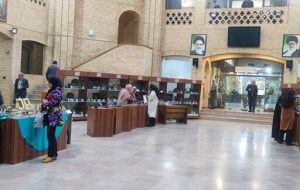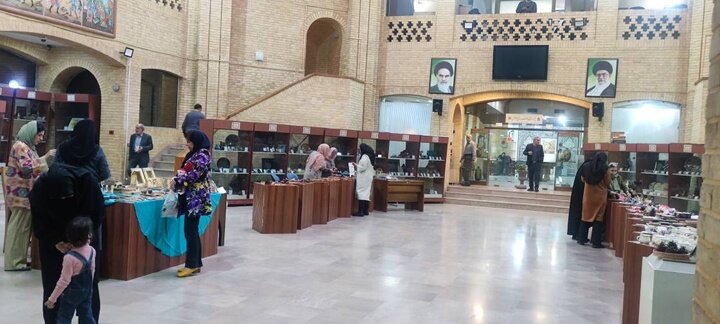Ministry of Cultural Heritage hosts exhibit of wooden crafts and ceramics
TEHRAN – The Ministry of Cultural Heritage, Tourism, and Handicrafts has inaugurated its first weekly handicrafts exhibition following the conclusion of the National Handicrafts Exhibition. The event, held in the Ministry’s central atrium, showcases various artworks, including intricate wooden jewelry, relief carvings, and painted wooden and ceramic sculptures. Artists from Tehran province have brought a


TEHRAN – The Ministry of Cultural Heritage, Tourism, and Handicrafts has inaugurated its first weekly handicrafts exhibition following the conclusion of the National Handicrafts Exhibition.
The event, held in the Ministry’s central atrium, showcases various artworks, including intricate wooden jewelry, relief carvings, and painted wooden and ceramic sculptures.
Artists from Tehran province have brought a selection of their works to display and sell at the venue, providing an opportunity for visitors to appreciate and acquire unique pieces, CHTN reported.
The exhibition opened earlier this week and will continue until the weekend at the Ministry of Cultural Heritage, located on Tehran’s Azadi Street, welcoming enthusiasts and art lovers.
The 37th National Handicrafts Exhibition brought together nationwide artisans, craftspeople, and nomadic artists to the Tehran International Permanent Fairgrounds from November 13 to 16.
Earlier this month, the Iranian President Masoud Pezeshkian officially issued the National Document for the Development of Handicrafts, as a pivotal step to bolster the country’s traditional arts and crafts sector.
The document sets a comprehensive framework for revitalizing and promoting Iranian handicrafts on national and international stages, aiming to preserve and modernize traditional Iranian crafts while enhancing their contribution to the national economy. According to the document’s text, its objectives include increasing the share of handicrafts in the GDP, expanding domestic and international markets, and promoting the cultural identity embedded in these crafts.
The document also highlights the need for technological integration, urging adaptation to innovations such as artificial intelligence, blockchain, and the metaverse to ensure the sector remains competitive and relevant in a rapidly evolving global market.
Currently, a selection of 13 cities and three villages in Iran have been registered by the World Council of Handicrafts as “world cities of handicrafts”.
AM
